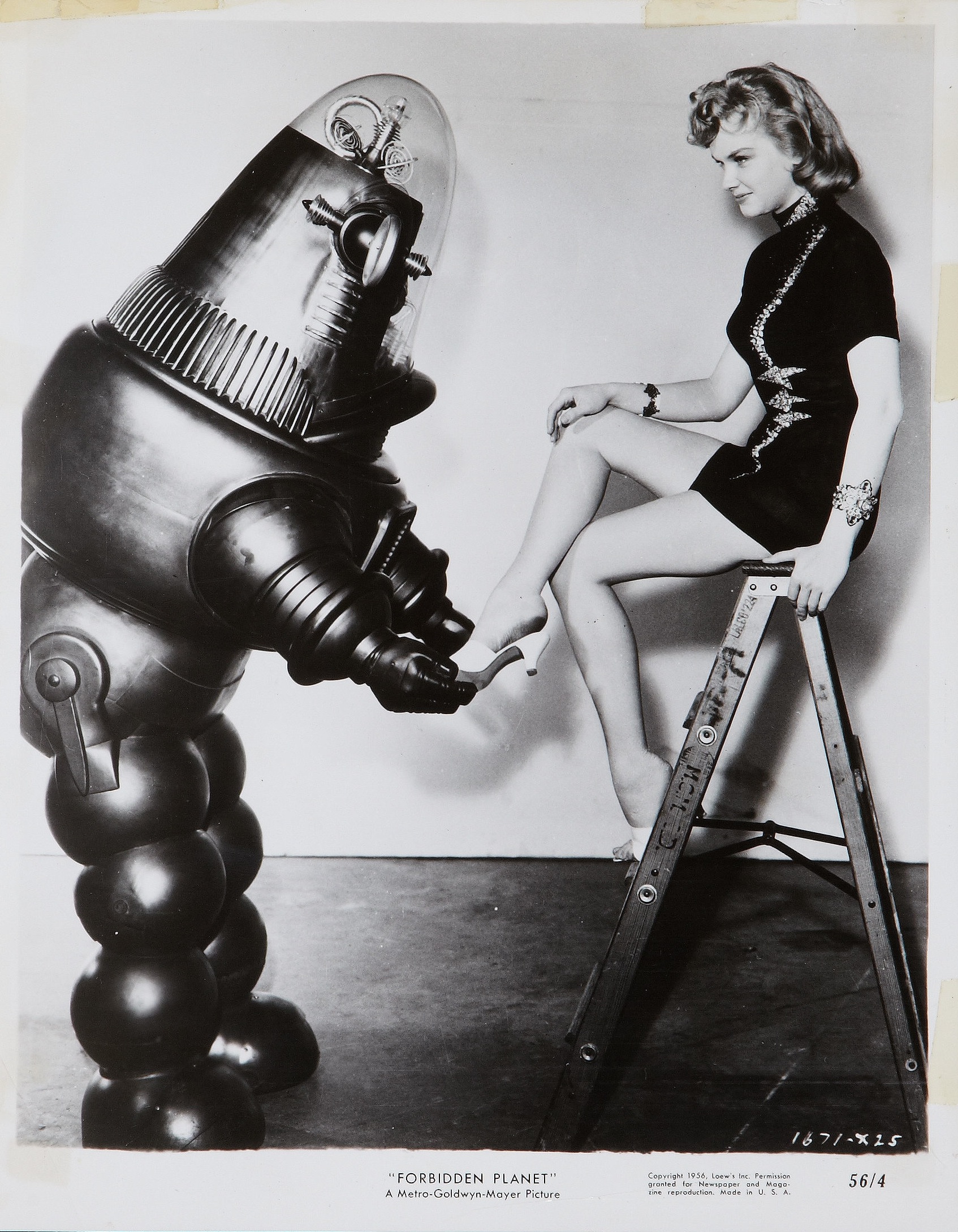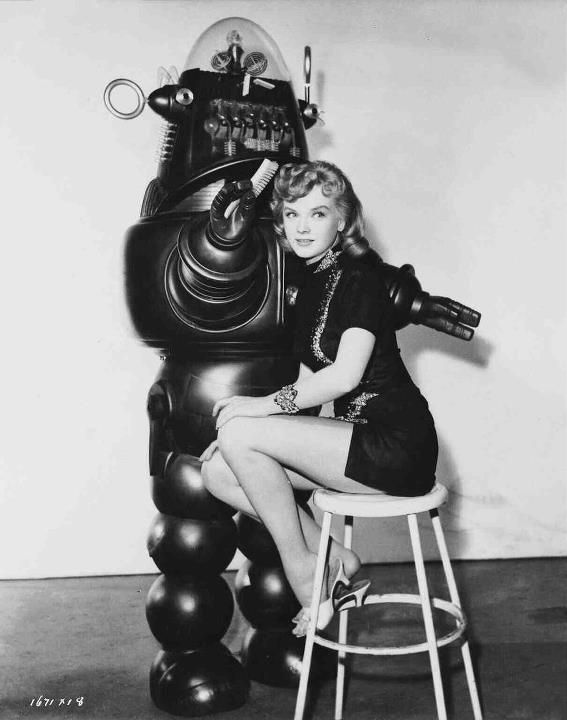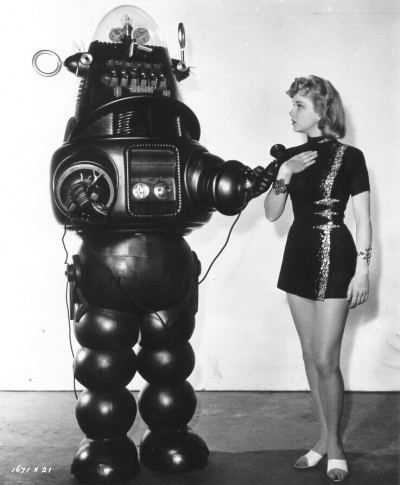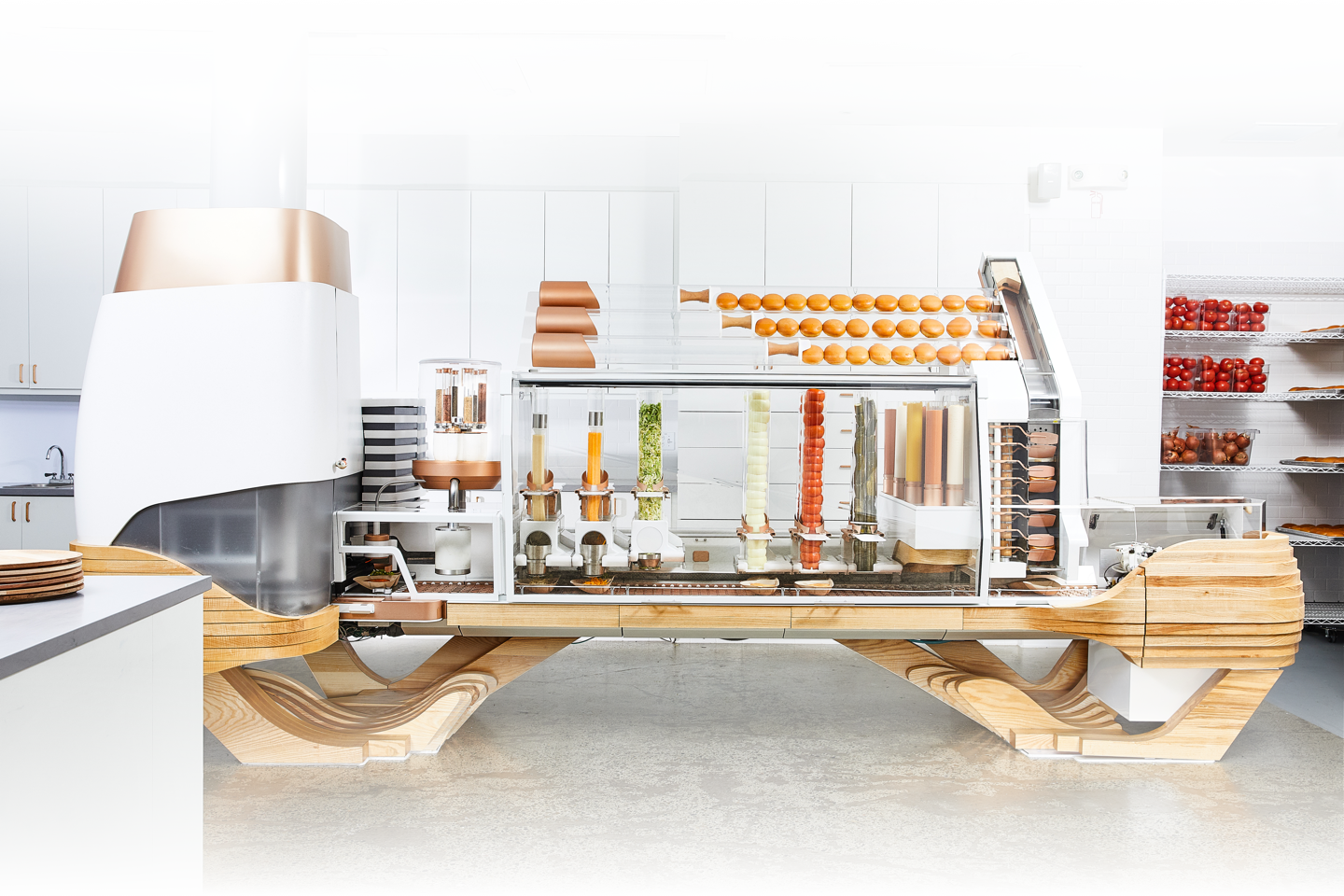Automation in the City, Architecture, and Healthcare
Robots have long been a subject of fascination for human beings. Since the industrial revolution and the invention of the first computer, people have pondered the idea of creating a humanoid machine that would assist us in the burden of labor.
Anne Francis and Robby the Robot
Forbidden Planet, 1956
Robots feature in movies throughout the 20th century as crucial players in future societies. This fascination has remained relatively separate from architecture since robots first appeared in popular culture in the 1950’s. In the 1960's, neofuturistic architecture group, Archigram, used robotic imagery in pop collages to explore colorful and playful futures, but the technology remained too nascent to make the leap into the built environment.
Walking City and Manzak
Archigram, 1964
Before we dive into how that’s changing, let's first define what a robot is…
ro·bot
noun
a machine capable of carrying out a complex series of actions automatically, especially one programmable by a computer.
- (especially in science fiction) a machine resembling a human being and able to replicate certain human movements and functions automatically
Robots in Security
Knightscope K5 is robot that has recently appeared in San Francisco. Founded in 2013, Mountain View-based Knightscope markets its robots as crime deterrent devices.
According to San Francisco Police Department's CrimeMapping tool, police received reports of over 134 alleged crimes within a quarter mile of the intersection of 8th and Harrison Streets during the month of July this year. That included 27 cases of assault, 16 vehicle break-ins, and 8 motor vehicle thefts in the vicinity.
A gas station located at the 8th and Harrison intersection recently added a Knightscope K5 to their premises in an effort to reduce vandalism on their property.
Among other things, the bot is designed to scan license plates (“get alerts when terminated employees, trespassers, or domestic abusers are found in your parking lot”), and each of its four-way cameras notifies passersby that they’re being recorded. The K5 weighs 400 pounds and stands over five feet tall, so theft of the unit itself is unlikely. At a monthly rental rate of $6,500 per month, the K5 is more affordable than hiring security personnel. The maximum speed of the bot is just three miles per hour, slightly slower than the average human walking speed, so it wouldn't be much good for chasing down offenders. It's intended purpose, rather, is to deter criminal acts through surveillance.
For more rugged, multi-terrain applications, Knightscope is currently developing the K7. Airports, prisons, power utility substations, and solar and wind farms are some of the spaces that the K7 is envisaged to protect.
Robots in Food
Creator SF
On June 27, 2018, the world's first robot-made burger restaurant, Creator, opened its doors in San Francisco. In five minutes, the machine accomplishes every part of the burger’s preparation, from slicing and toasting the brioche buns to grinding meat and searing the burger to order. It can make 120 burgers an hour, sold for $6 each. With fewer human laborers, Creator can afford to spend more on high quality ingredients while still delivering a burger at a remarkably low price point. Its initial launch featured menu creations by renowned chefs, including Bar Tartine's Nick Balla and Top Chef contestant Tu David Phu.
Photo: Creator
Replacing humans?
Some tasks are better suited to be performed by robots than humans. Ingredients may be sliced by robots with 1 millimeter precision. Sensors can determine the ideal cook temperature of foods. The process is not entirely devoid of humans, however. At Creator, as many as nine human "robot attendants" may be working on the floor at a time.
Robots in Architecture
DFAB House
In Zurich, Switzerland, ETH Zurich University researchers are building the first house in the world to be designed, planned and constructed using digital building processes. The DFAB house is a three-story complex that employs five novel digital building processes:
- the In situ Fabricator, a two-meter robot that moves around autonomously on crawlers manufactures the double arched steel wire grids used as the formwork for the load-bearing walls
- Mesh Mould, a formwork-free, robotic process for steel-reinforced concrete structures;
- Smart Dynamic Casting, an automated concrete slip-forming process;
- Smart Slab, integrated ceiling slabs fabricated with a large-scale 3D sand printed formwork; and
- Spatial Timber Assemblies, a pre-assembled timber structure put together by several interacting robot
Photo: NCCR Digital Fabrication/ETH Zurich
ICD/ITKE Research Pavilion 2016-17
Photo: MSeses
Researchers and students at the University of Stuttgart in Stuttgart, Germany used robot arms and drones to build a carbon fiber pavilion whose structure is based on the silk hammocks spun by moth larvae. The 39-foot structure is made from woven resin-impregnated glass and carbon fiber. The University's Institute for Computational Design (ICD) and Institute of Building Structures and Structural Design (ITKE) oversee an annual pavilion series that studies the capabilities of carbon fiber as a building material. Previous structures were restricted by the limitations of the robotic arms used, so the team opted to use drone technology to take advantage of the structural performance of continuous filaments. Two stationary robotic arms were used in conjunction with a drone to pass the fiber from one end of the structure to the other.
The possibility of entirely digitally fabricated structures causes us to rethink the overall planning and design process and provides an opportunity to exploit the advantages inherent in the digital chain of design. Labor cost, material economy, time efficiency, design flexibility and quality control must all be reevaluated.
ROBOTS IN HEALTHCARE
Mabu, a small yellow tabletop home healthcare robot is one of several healthcare robots in use today. Created by San Francisco startup Catalia Health, Mabu was designed to help chronic disease patients stick to their continued care plan. Initially launched with a focus on heart disease, Mabu acts a companion that provides appointment and medication reminders and personal coaching through automated conversation.
Faced with a looming shortage of nursing care workers and a swelling elderly population, the Japanese government has been funding development of elder care robots that help with lifting, moving, monitoring, entertainment and companionship. The National Institute of Population and Social Society has projected a shortfall of 380,000 elder care workers by 2025. In Tokyo's Shin-tomi nursing home, Pepper is one of 20 models used to care for its residents.
Pepper is a humanoid robot from Softbank Robotics Corp designed to interpret emotions through cameras in microphones. It is used in stores to welcome shoppers and in elder care homes to lead games, exercise classes, and rudimentary conversation based on programmed dialogues.
Photo: Geraldshields11
Paro is the name of a robotic seal (short for "personal robot") that acts as a therapy animal without the needs of a live animal. Using about 100 sensors, 10 CPUs and 8 monitors, Paro can respond to touch, speech and light by moving its head, blinking its eyes and playing recordings of Canadian harp seals. Introduced in 2004, Paro costs about 400,000 yen ($3,800) each.
While allowing robots to help care for the elderly may seem like a jarring idea in the West, many Japanese view elder care robots positively. Popular media in Japan often depicts them as friendly and helpful. Still, some criticize the practice for replacing meaningful human connections.
The future of robots
Robots have the potential to completely revolutionize the way we interact with the city, buildings, and healthcare environments. While certain industries seem ready to adapt to the robotic revolution, others approach automation with caution and skepticism. Whether or not the AEC industry embraces or rejects robots, architects will undoubtedly play an important role in how they are integrated into our future buildings and cities.













